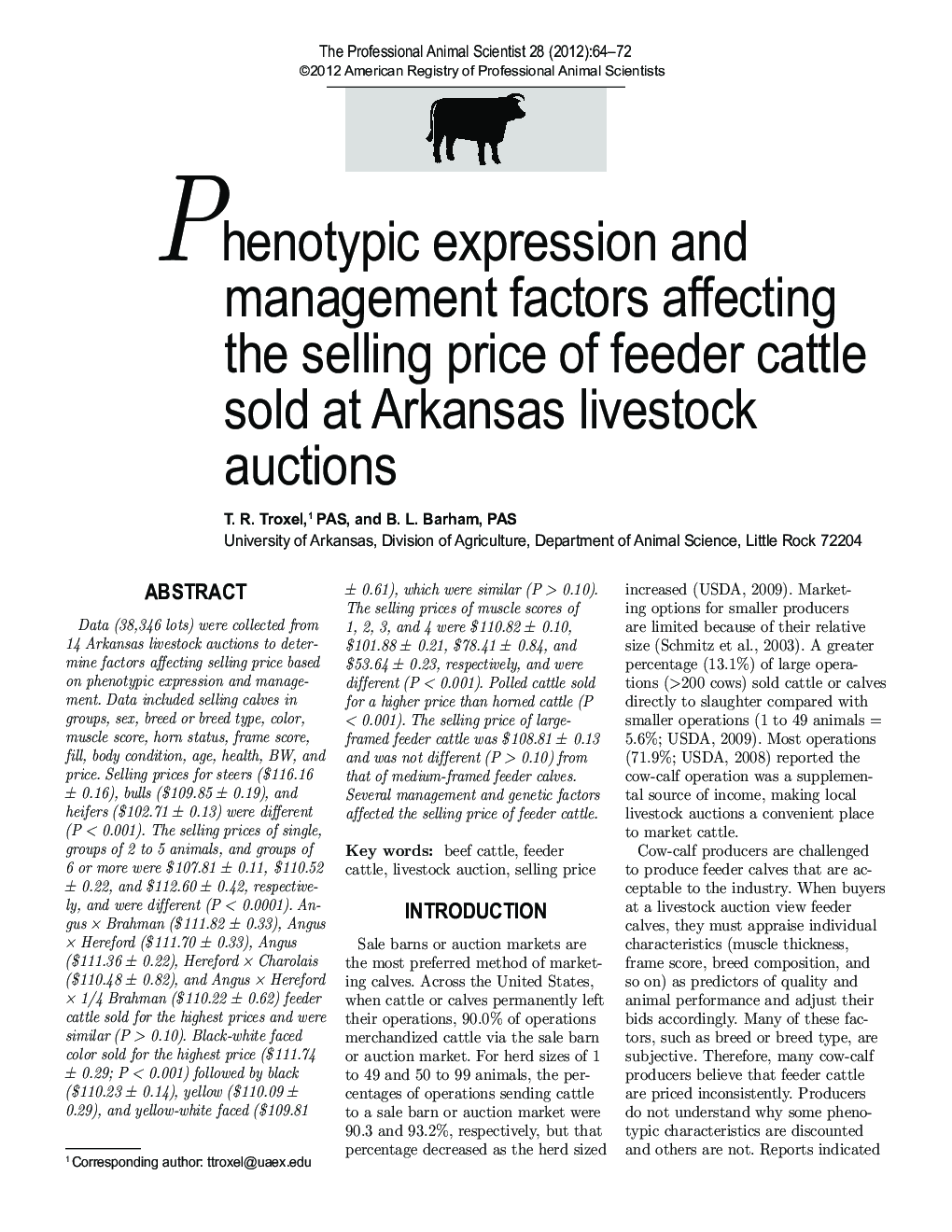| Article ID | Journal | Published Year | Pages | File Type |
|---|---|---|---|---|
| 2453929 | The Professional Animal Scientist | 2012 | 9 Pages |
Abstract
Data (38,346 lots) were collected from 14 Arkansas livestock auctions to determine factors affecting selling price based on phenotypic expression and management. Data included selling calves in groups, sex, breed or breed type, color, muscle score, horn status, frame score, fill, body condition, age, health, BW, and price. Selling prices for steers ($116.16 ± 0.16), bulls ($109.85 ± 0.19), and heifers ($102.71 ± 0.13) were different (P < 0.001). The selling prices of single, groups of 2 to 5 animals, and groups of 6 or more were $107.81 ± 0.11, $110.52 ± 0.22, and $112.60 ± 0.42, respectively, and were different (P < 0.0001). Angus à Brahman ($111.82 ± 0.33), Angus à Hereford ($111.70 ± 0.33), Angus ($111.36 ± 0.22), Hereford à Charolais ($110.48 ± 0.82), and Angus à Hereford à 1/4 Brahman ($110.22 ± 0.62) feeder cattle sold for the highest prices and were similar (P > 0.10). Black-white faced color sold for the highest price ($111.74 ± 0.29; P < 0.001) followed by black ($110.23 ± 0.14), yellow ($110.09 ± 0.29), and yellow-white faced ($109.81 ± 0.61), which were similar (P > 0.10). The selling prices of muscle scores of 1, 2, 3, and 4 were $110.82 ± 0.10, $101.88 ± 0.21, $78.41 ± 0.84, and $53.64 ± 0.23, respectively, and were different (P < 0.001). Polled cattle sold for a higher price than horned cattle (P < 0.001). The selling price of largeframed feeder cattle was $108.81 ± 0.13 and was not different (P > 0.10) from that of medium-framed feeder calves. Several management and genetic factors affected the selling price of feeder cattle.
Related Topics
Life Sciences
Agricultural and Biological Sciences
Animal Science and Zoology
Authors
T.R. PAS, B.L. PAS,
